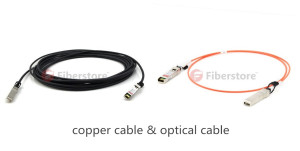-
Which Is Suitable for You, Optical Cable or Copper Cable?
People find it’s very difficult to discover the perfect solution for cabling infrastructure. The one is that it should depend on many complex circumstances. The other is because people don’t know very well about the properties of copper cables and optical cables. Copper wires transmit electrical currents, while optical technology uses pulses of light to carry data along strands of glass or plastic. Each one has its advantages.
Firstly, the advantages of optical cable show in these fields, bandwidth, distance and speed, safety. Optical cable has a higher bandwidth than copper and has standardized performance up to 10 Gbps and beyond. More bandwidth means it can carry more information with greater fidelity than copper wire. Because the fiber optic signal is made of light, so data can transmit at a higher speed over longer distance with less signal loss. There is no electrical current that flows through optical cable. While copper carries a current and could cause a fire concern especially when it is old or worn.
Secondly, the advantages of copper cable obviously show in the fields like power, cost, and flexibility. The copper cable could continue work if the electricity goes out because it has an emergency power supply. It’s able to power phones, surveillance cameras, Wireless Access Points, and many other devices through the networking cable itself. That’s to say an electrician is no need to be employed to power the surveillance cameras. It can also keep up with the networks by some sophisticated products, like the electronics getting signals on and off the cabling. Electrical power transmission over copper is cheaper than laser power transmission over fiber. So the copper cable is less expensive than optical cable. When you install cables in your house, you have to bend them because there are many corners. So the copper cable is very desirable as it’s flexible. It will not crack or break when you bend it.
For example, two kinds of SFP+ cables will make you know them more clearly and they are SFP+ passive copper twinax cables and SFP+active optical cables.
SFP+ passive copper cables are suitable for very short distances. They provide a low cost, low power and low latency interconnect solution for 10-Gigabit Ethernet, Fiber Channel and other industry standards. SFP+ active optical cables support longer distances than SFP+ passive copper cables. They are designed for high speed and short range data link. SFP+ AOC cable is a cost effective solution for Data Center/ storage and all short range data application.
With the same length and both compatible with the brands like Cisco, cisco passive twinax 5m is much cheaper than cisco Active Optical Cable 5m. And it requires no direct power to operate. However, active optical cable can provide high speed transmission over longer distances.
Now since you know the basic points about copper cable and optic cable, you can find a perfect solution for your cabling infrastructure.
-
Commentaires

